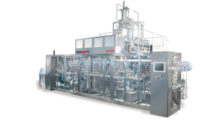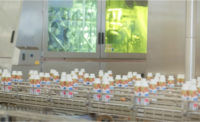Tetra Pak has commenced research toward advancing fibre-based sustainable food packaging, in collaboration with MAX IV, the most modern synchrotron radiation laboratory in the world, the company stated. The research aims to uncover fresh insights into the nanostructure of fiber materials, with the first application to optimize the composition of materials used for paper straws.
This is the first industrial research and development experiment at ForMAX, a new research station dedicated to studying materials from the forest, located at the MAX IV Laboratory in Lund, Sweden.
As the global demand for safe, nutritious food intensifies, and the scarcity of raw materials increases, the need to develop more sustainable packaging solutions that use less of these scarce resources has become urgent. New materials based on paper will bring novel opportunities, but they need to remain food safe, recyclable, be more durable against liquids and humidity, while meeting the increased sustainability demands.
“A fundamental understanding of the structure and properties of materials is crucial as we work toward developing the package of the future, said Eva Gustavsson, vice president Materials & Package, Tetra Pak. "Our ambition is to provide the world’s most sustainable food package, and experiments at ForMAX will clearly support us in this mission."
“The package of the future needs to be fully recyclable and have a low environmental impact. Using renewable materials and increasing the use of fibre-based material within packages will be vital. With this research, Tetra Pak is helping to uncover fresh insights into plant-based materials as a basis for future innovations.”
Added Kim Nygård, Manager, ForMAX beamline, MAX IV: “The experiment conducted at ForMAX is a milestone for both academia and industry. The research station is the first of its kind and will facilitate both fundamental and applied industrial research on how new, sustainable materials can be used going forward. We are proud to support Tetra Pak in its development of sustainable packaging materials for the future.”


